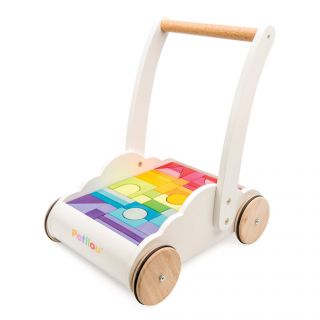How To Incorporate Sustainability Into Your child’s Playroom
- First Time Mums UK
- Sep 19, 2023
- 4 min read
The playroom – a chaos filled space that’s a child’s dream and a parent’s nightmare! We’ve all been there, the playroom starts off as an aesthetically pleasing haven with everything in its place but after five minutes with a toddler, the toys have erupted and chaos is king.

With a cluttered toy room, also comes mounds of plastic - primarily non-biodegradable which can negatively impact the environment. There are ways to both reduce the clutter of the playroom whilst also keeping an eye on your carbon footprint and plastic waste.
Here, Sanam Saghir, one of the owners of toy rental service, Whirli, shares how parents can
maximize their child’s playroom while minimizing their carbon footprint.
Playdate Recycling
On average, 90% of popular children’s toys are made of plastic with 80% of all toys ending up in landfill*, ultimately contributing to the world’s environmental crisis.
To help alleviate the plastic waste in your playroom, look to recycle toys with your family, friends and playgroups. Organize toy swaps between one another - this serves as a fun way for your children to trial new toys all while reducing waste.
The circular nature of playgroup recycling allows children to play with their favourite toys while reducing plastic waste in an eco-friendly, cost-effective way, all while ensuring your child is able to play with new and exciting toys.
Another way to reuse toys is to invest in second hand toys rather than buying new. Charity shops and resale sites, like eBay and even Etsy, are good starting points look to reuse toys by purchasing second handover buying brand new. Resale sites also come with a risk of lack of product variety and control over safety, cleanliness and assurance that the product is in top working order.
In recent years, toy rental services like Whirli have helped parents to decrease the clutter of
their playroom and carbon footprint with toy subscription services. This monthly subscription service allows for parents to rent top-of-the-range toys for their child, without having to have the toy as a permanent fixture in the playroom when they tire of or outgrow it.
Sanam said: “At Whirli we like knowing that we can help parents access top of the range toys, whilst reducing packaging and plastic waste. This sustainable approach to renting toys gives parents the opportunity to trial different types of toys for their children without unnecessarily cluttering their playroom or breaking the bank.”
By using a rental service like Whirli and reusing toys means children can play with their favourite age-appropriate toy before growing out of it and desiring a new one. Cutting down on the plastic packaging and then purchasing new plastic toys (most if not all that are made with non-biodegradable plastic) helps lessen the carbon footprint.
Go Sustainable Where Possible
With plastic being such an intrinsic part of popular children’s toys, it feels nearly impossible to find suitable alternatives. Where possible, look to invest in products that use little or no plastic at all, such as wooden toys or organic cotton cloth toys. If purchasing electronic toys, avoid batteries where possible as they lead to increased waste. If you do have electric toys with batteries and need to recycle them, most supermarkets that sell batteries will also have a battery recycling bin on-site. Check with your local supermarket ahead of time if not there are recommendations for recycling with your normal recycling bin.
Alternatively, look for furniture for your playroom that grows with your child from baby to primary school like a highchair that has the ability to be used as a chair in older years. Bean bag chairs filled with eco-friendly filling are also a fun addition to your playroom that will last years and age with your child.
Use sustainable materials in your playroom where possible such as using a playmat made from recycled materials. Likewise, look to reuse items found around the house to create upcycled playroom furniture and activities.
Further sustainable tips for your décor in your playroom include opting for energy efficient light bulbs to reduce overall energy consumption. However, where possible use natural lighting in your playroom as this will help reduce energy consumption.
Minimalism and DIY
Less is more when it comes to curating the ideal playroom for your child. Prioritizing having fewer toys of a higher quality over a large quantity of toys will help your playroom feel less cluttered and will lead to less toy waste. Invest in quality toys that allow for your child to have imaginative play and can have multiple uses such as building blocks which can be used for building houses, creating a fortress for an imaginary castle or a simple toy for learning numbers and colours. Imaginative play and encouraged creativity in the playroom have proven effects on benefitting children such as emotional management, critical thinking and interpersonal social skills**. Incorporating imaginative play into your child’s playroom and routine is a great way to increase these skills and maximise the
quality toys you already have.
Regardless of how you look to incorporate sustainability into your child’s playroom, keeping
sustainable practices front of mind will in-turn allow your playroom to be a more eco-conscious space positively impacting your home and the planet.
Author: @giveitawhirli
.png)









Comments